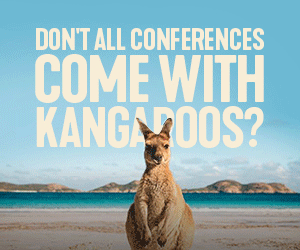Membership Engagement - Are you as Agile as your Members?

Jeffer London speaks with Arie Van Bennekum about becoming agile. Jeffer is a facilitator at the Center for Creative Leadership (CCL®), a top-ranked global provider of executive education that develops better leaders through its exclusive focus on leadership education and research. Arie is a co-author of The Agile Manifesto and supports organisations to develop, transform and be ecosystems for innovation.

Participation and interaction are key, and agility is exactly what associations need today to be quick, fresh and relevant. Membership involvement is on the rise! The COVID-19 situation raised many issues for associations and their leaders, but what we did not realise was how membership organisations would be positively impacted. Members are more involved, more active and more committed. We know people join associations because they believe in the purpose. The sudden shift to digital has made involvement possible, while being in confinement gave people time to reflect on what they feel is important. Members are ready for more, so are you agile enough to let it happen?
Jeffer London: What are the habits of an agile team?
Arie Van Bennekum (Photo): Being agile is about staying in touch and adapting. We do this in daily stand-up meetings, heartbeat check-ins each couple days and retrospective debriefs each two weeks. The foundation of all this interaction is feedback and adjusting our approach quickly based on the latest results. An agile team is an engaged team and an agile association is an engaged association.
JL: How does all that talking create better results?
AVB: Results are better when you’ve built something that meets all the needs. Communication is the best way to gather needs. It brings people together and gets them excited about the progress being made. Doing project reviews in an agile way lowers assumptions, clarifies interpretations and allows us to adjust our course so we don’t waste time.
JL: What is a leader's role in an agile association?
AVB: Purpose. Articulate the purpose of the association. That’s why members join: to connect with a purpose. It is not enough to just have a compelling vision statement. Members and project teams need you to be a compass in initiatives. Especially now, when the external environment is changing so quickly. What will the ‘new normal’ be? It will be what we create. We need to ask ourselves ‘What is my role in creating the future?’ My book #YouAreTheArchitectOfYourOwnLife talks about our choices when faced with external factors: we can accept them, change them, or leave. If we decide to stay, being proactive is much more fulfilling. When we want to make something work, the first step is to quell the internal voices of doubt and ask yourself ‘Why are you resisting this change? What is behind my “but…”?’
JL: So do we have to be personally agile?
AVB: Right. Which means staying open. To feedback, to adjusting the plan. Look at who has had the most trouble with COVID-19 confinement. Not young people: they are all connected, gaming, making the most of their social networks. Meanwhile, there are many older (by age or mentality) people who are having trouble reinventing themselves and their organisations. They feel isolated. Why go it alone? Work through this with a partner. Get fresh-minded people on board. A lot more is possible #withalittlehelpfrommyfriends.
JL: How can we bring agility to our members?
AVB: Make it easy for people. One click. No extra downloads. Make sure there is a low threshold technology. Think about your Annual General Meeting (AGM). A lot of people don’t show up because they don’t have the time, the travel budget, and probably don’t want to just sit and listen. Now you can get people involved so easily. They can click and watch, ask questions on a platform, volunteer to host a breakout conversation, or get the recording for later. Your members are already agile, the question is have you put the infrastructure in place to make their participation easy?
JL: What is the opportunity for leaders and members?
AVB: Real connection. It used to be that we needed to be in the same room to have the feeling of psychological safety. That has changed. Suddenly, we can find ourselves in an online breakout session having an intimate conversation that bridges old hierarchies. Now we have quick 1:1 over whatsapp, in a way that wasn’t possible when we had to make an appointment with a secretary to have a meeting with the boss.
JL: Any advice to improve this connection?
AVB: Up the rhythm. Have more interactions, of shorter duration. Intensifying the frequency is what we do with agile projects. It helps us fine-tune our initiatives as our organisations keep transforming. When we wrote the Agile Manifesto, we spoke about Face2Face communication, not Body2Body. Now that it is so easy to have a video call, take advantage of it.
JL: What’s your ‘new normal’?
AVB: I am based in The Netherlands, but until recently 95% of my business was in China. Suddenly that stopped. I had to ask myself: do I accept having no work, do I leave or do I change? So, I am changing. The four-week F2F intensives I used to offer are now remote eight-week platform events. I used to be on stage, now I am on camera from home. Doing remote facilitation is not new for me – coming out of the software industry, we were all remote – but now I need to say ‘We can facilitate this remotely’, which is a bit crazy because we have been doing that forever.

For insights into the facilitation of engagement, see Jeffer’s blog about stimulating conversation at jeffer-london.com.
This article is included in issue 95 of Headquarters Magazine. See the magazine here.
Other Articles
About Us
Supported by the Union of International Associations (UIA), the International Association of Professional Congress Organisers (IAPCO) and the Interel Group, the global public affairs and association management consultancy, Headquarters Magazines serve the needs of international associations organising worldwide congresses.















